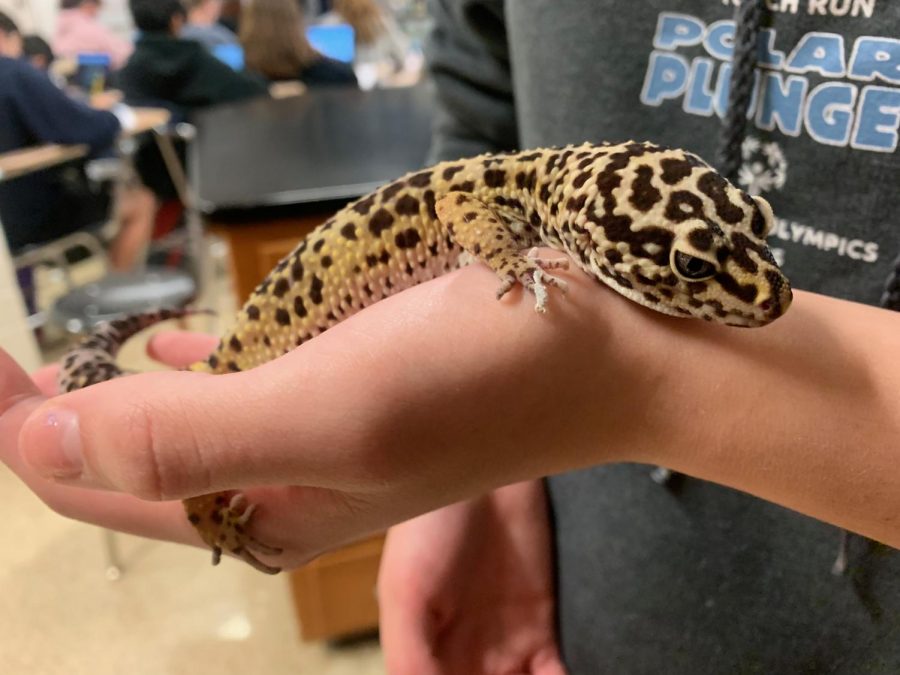Opinion: The perks and problems of classroom pets
Can having pets increase learning in the classroom?
Students can learn responsibility from classroom pets like Steven Levon’s gecko Leo, but they also can make classrooms less stressful.
November 6, 2019
In elementary school, my classroom had its very own butterfly garden. We learned the four stages in the metamorphosis of butterflies: egg, larva, pupa, and adult. When they fully grew we released them into the real world. We also hatched chicks and ducklings in elementary school—I’d never held anything more fragile than a baby animal. I thought as I aged we would continue to learn more about animal sciences. As I matured, I learned how to dissect animals instead of watching them develop.
MCHS’s curriculum allows certain teachers classroom pets. Classroom pets make an educational space more inviting. Though classrooms are not an ideal home for these animals, classroom pets have many benefits for students, but there are disadvantages as well.
Classrooms pets are a good way for elementary and middle school children develop nurturing skills, but I wonder why fewer high school classrooms have classroom pets.
Steven Levon, the Honors and A.P. Biology teacher at MCHS, simplifies the advantages of pets in the classroom. “It gets people involved in class, it engages people,” he says. “I don’t think there is any person who doesn’t like animals to some level. They can get interested in biology through holding the lizards or seeing the turtles. So I think that’s a big advantage, getting to talk to students informally instead of talking to them about school.”
Small animals appeal to many people, and there is evidence to prove that animals can reduce stress and anxiety. The majority of students who don’t have any pets at home can learn how to make a connection with animals in the classroom. When students get the opportunity to hold an animal for the first time, it’s likely an experience they will not forget, nor take for granted.
When animals are in class, attendance numbers improve. Perhaps it’s the reliable students being responsible, but most students are genuinely more excited to show up to class when there are animals around. It’s less likely that a student will cut class to roam the hallways when they could look at cute animals instead.
Having a spacious classroom is ideal. Even small pets have a minimum cage or aquarium requirements.
Classroom pets can result in health risks for both the students and animals. There are many kinds of allergies relating to animals. When animals are mishandled they can react in a natural way which is to nip or bite. The teacher has to trust their students to behave, but also feel comfortable to educate students if they are putting animals in danger.
High schoolers do not need pets in the classroom to teach them about responsibility, however, classroom pets make for a great stress reliever. It’s not fair to any pet if they do not have adequate space, enrichment or proper care. Pets are making the world a better place, and classrooms are more enjoyable for everybody when animals are involved.











